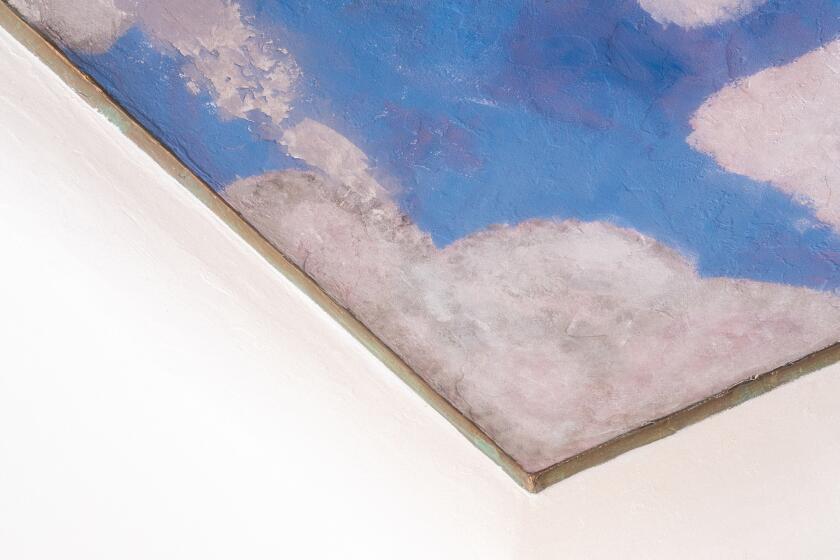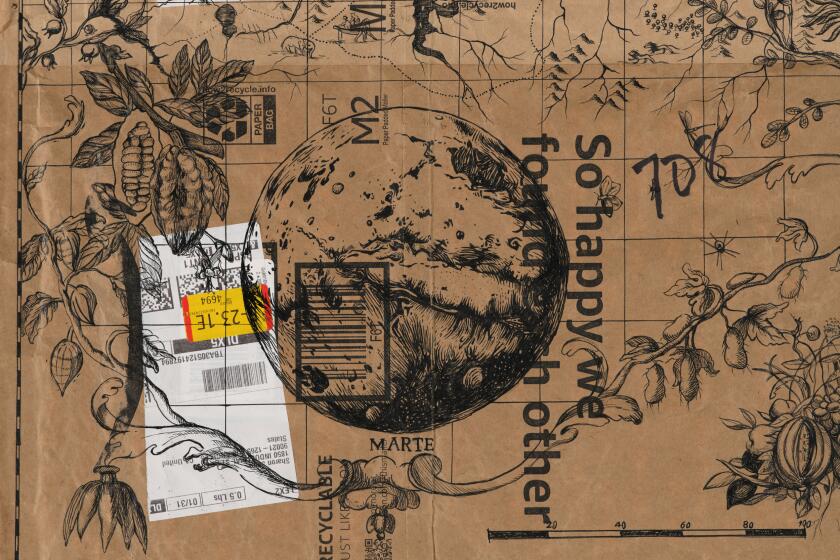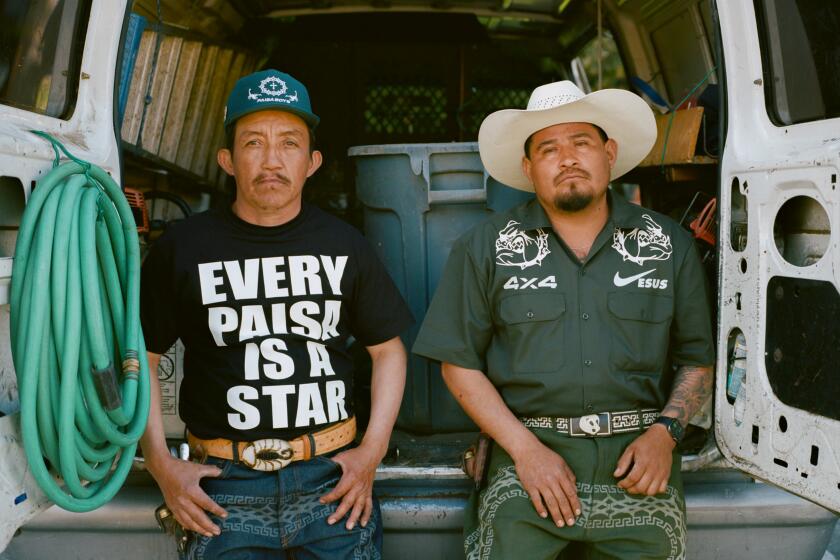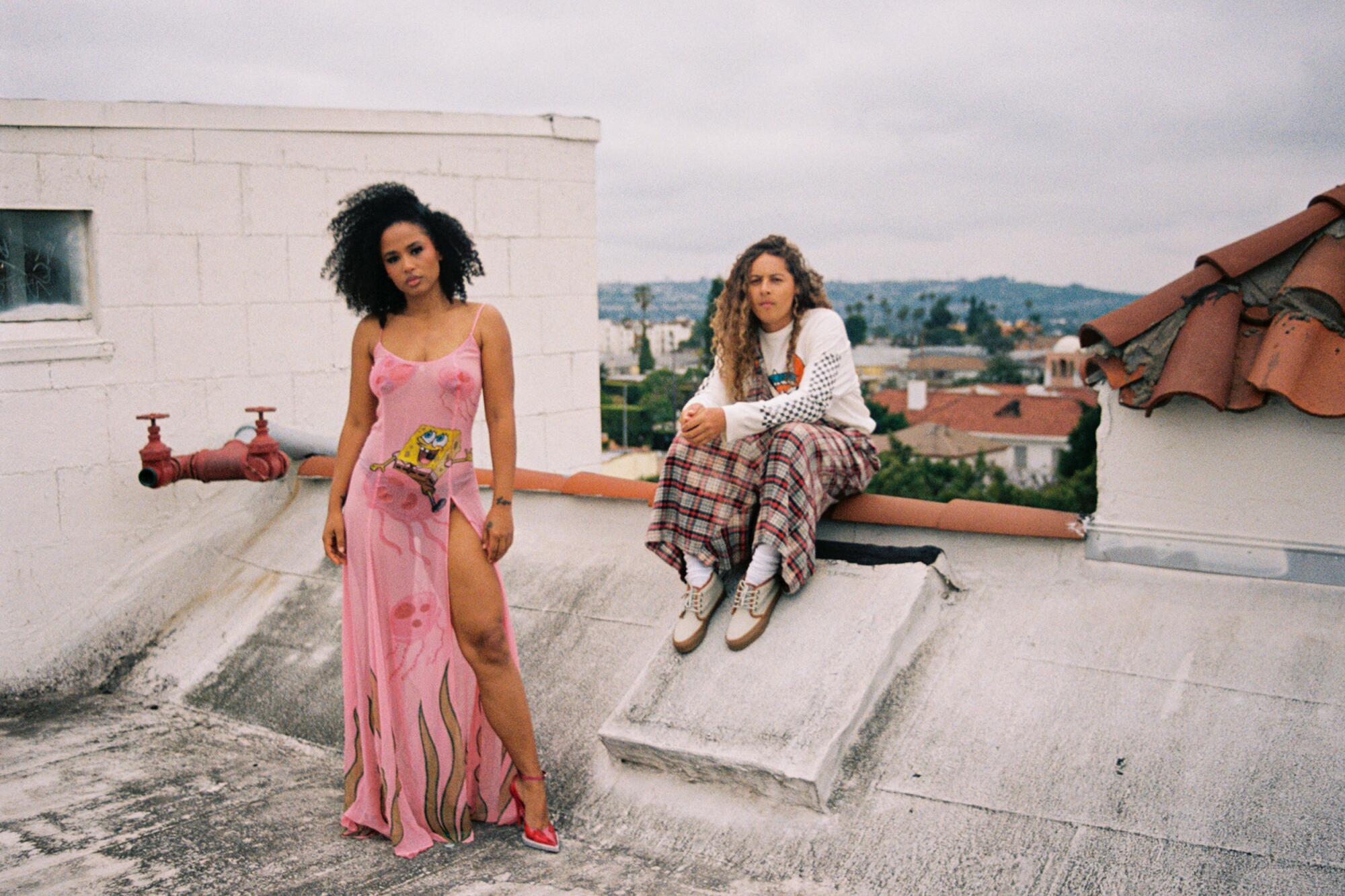
- Share via
This story is part of “Clearance,” a design issue that peels back the layers of aspirational architecture in L.A., and envisions a more beautiful future that lives a little less on the nose. Read the whole issue here.
It’s 11:55 p.m., New Year’s Eve. I can already hear the parade of fireworks approaching from down in my apartment. I run up two flights of stairs to a black screen door that is somehow always open, beckoning me, portal-like. I walk across the flat rectangle toward the downtown skyline, my north star, east of West Adams, and I brace myself. It’s 11:58 p.m. now. It’s coming. I’m ready.
This isn’t a place where people are meant to be — there is no modular furniture, no bar, the floor has permanent grime on it and the ledges aren’t properly secured for safe recreational use — yet here I am, and in that moment, where else would I be? It’s midnight now, and I know what’s about to happen. Hundreds of pyrotechnics explode around me and a tsunami of emotion wells up from my stomach to my chest. Bursts of color shoot up over the Hollywood sign, above Baldwin Hills, near USC. There’s only one place to get a view like this: on top of a roof.
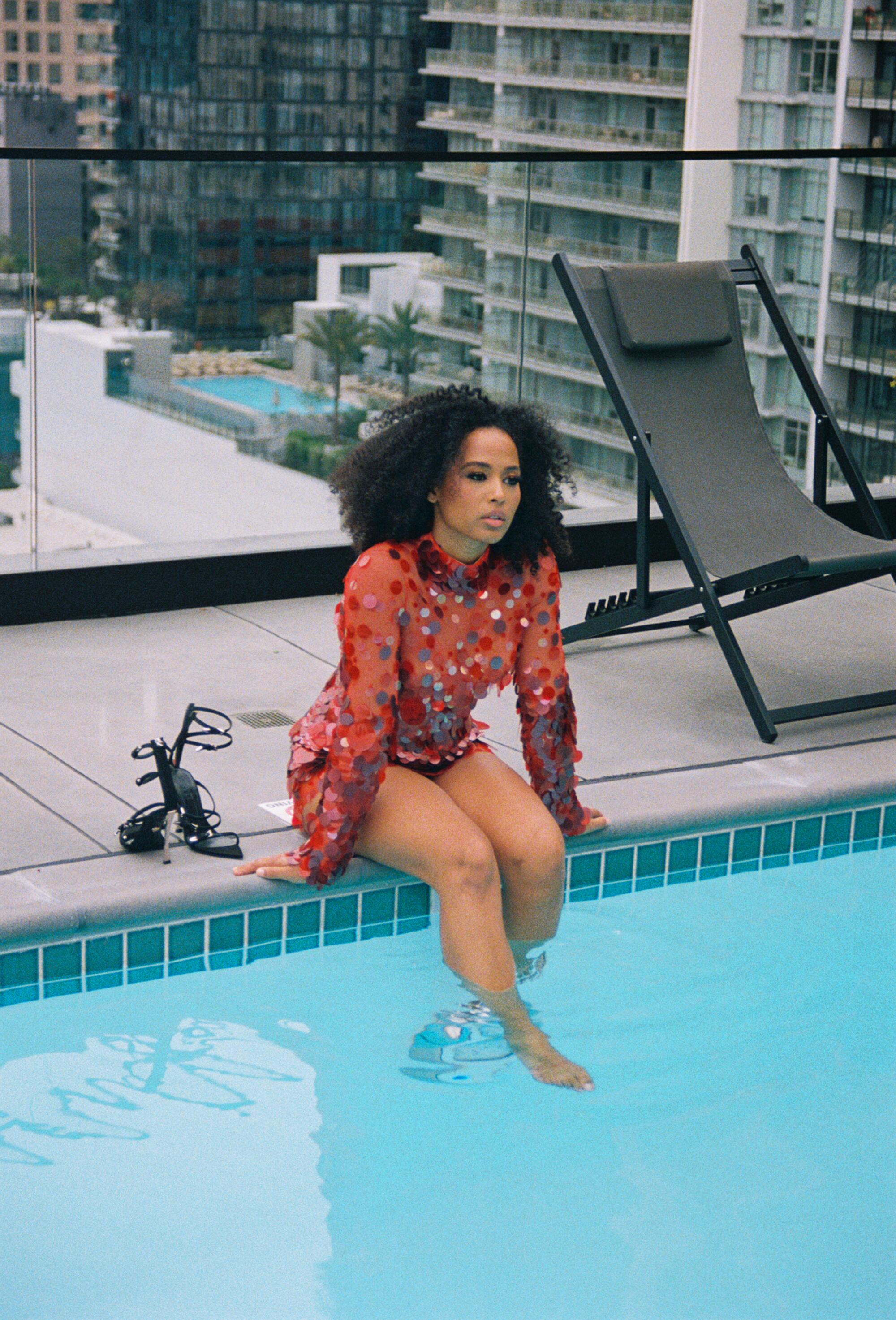
Every New Year’s Eve, this is where you’ll find me. Fourth of July too. And anytime the Dodgers win. A rooftop makes any day a special occasion. At least once a week, I find an excuse to climb the two flights to my special place, where I lose track of time looking at the lights in the distance, imagining thousands of tiny worlds playing out behind the thousands of tiny windows. But beyond the initial shock of the scenery comes perspective. Rooftops can alter one’s outlook by way of vantage. The thought is always: “I’m so small and insignificant, thank God,” which immediately morphs into “I’m connected to everything else my eyes can see here, for better or worse.”
A roof might be the first requirement of shelter. But there’s possibility to be found on the flip side.
We spend so much time in L.A. inadvertently looking out — gauging traffic in our cars, vibe checking while walking through downtown — but the best place to take in the city is from above. On a rooftop, you get a clear picture of connection in a city that people who don’t know better claim is disconnected. This may be the only place you can appreciate how the 10 and the 110 and the 101 flow into one another, how the constellation of disparate L.A. neighborhoods — Jefferson Park, Koreatown, East Hollywood — share a street: Arlington Avenue/Wilton Place. A rooftop isn’t as democratic a public gathering place as a park — the access is dependent on where one lives or has a key, whether one knows someone else who can slide you in — but the activities that go down there are egalitarian all the same. Traces of shared experience are in the remnants: roaches burnt to a crisp, empty Olde English bottles, tufts of hair from an amateur barber doing a fade the evening before.
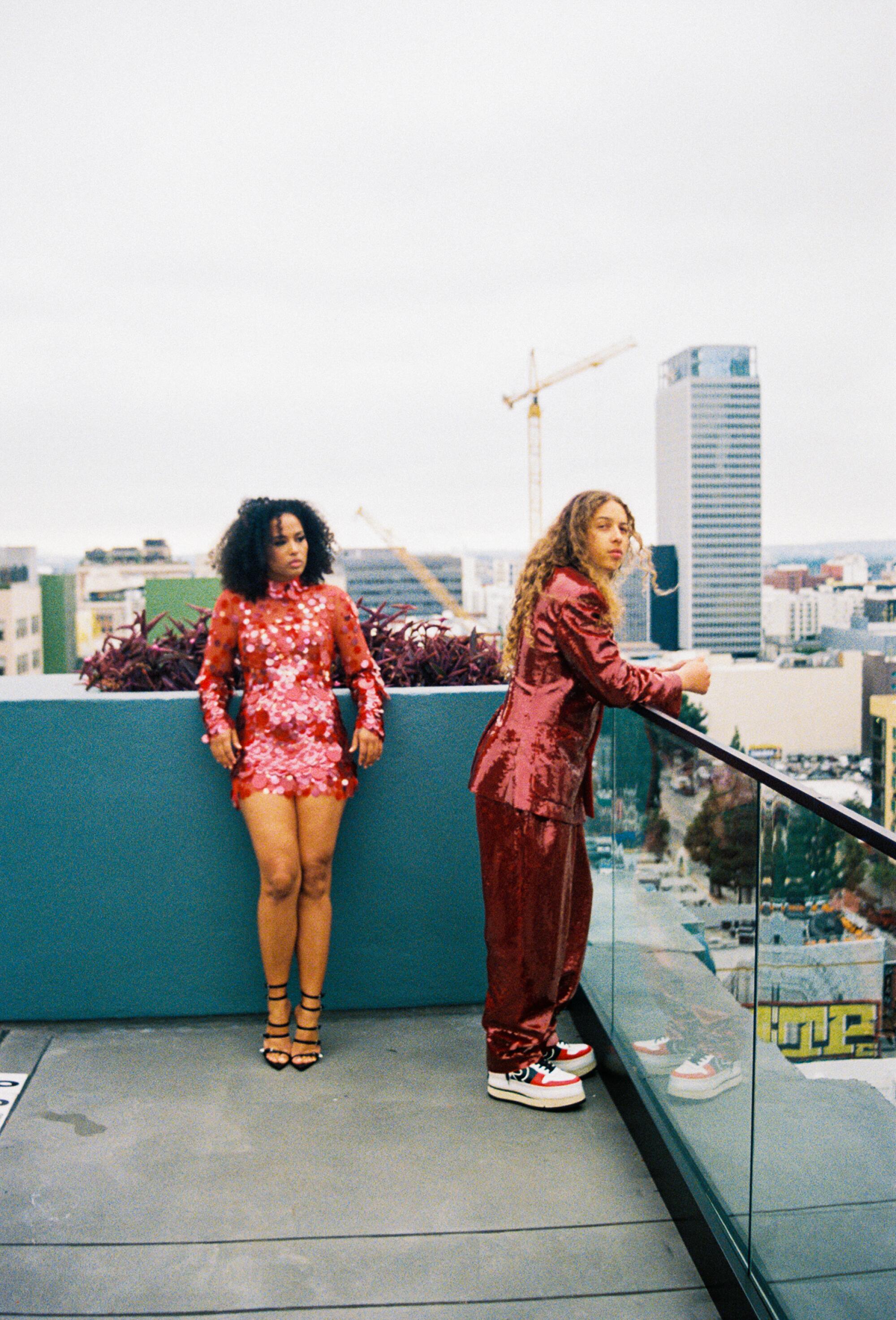
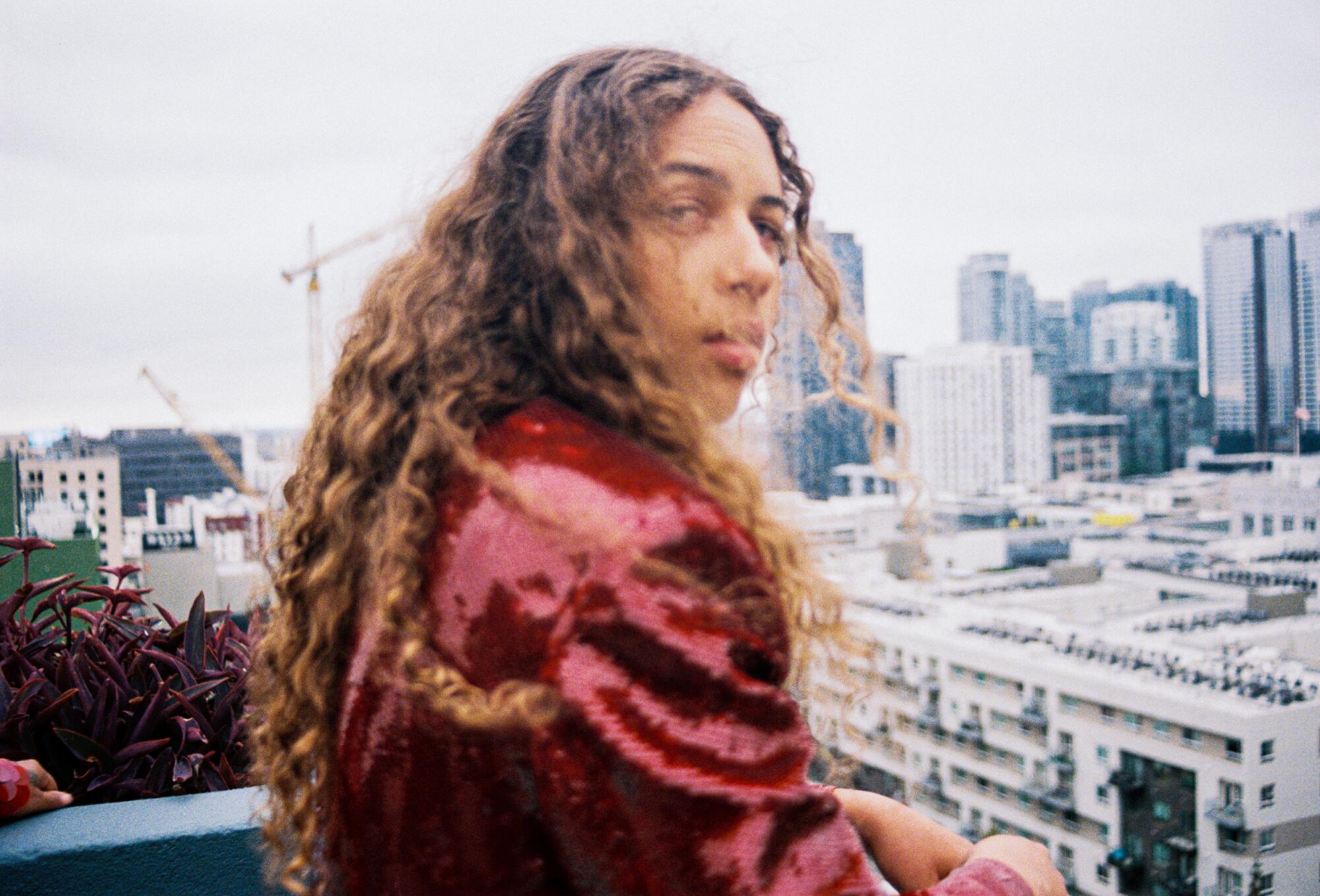
A rooftop is not the kind of an environment that’s special because of what might happen, it’s special because of the environment itself. The idea is that an everyday moment will become extraordinary because it’s flanked by a skyline, is baked into the lore of it. One of L.A.’s most eternal questions, especially when the days run hot and the late sunsets burn the color of an organic egg yolk (exactly like they’re starting to now), is “Who has a rooftop?”
You know what’s going down when you follow the sign on Broadway’s sidewalk: “Rooftop Open.” Upstairs at Ace Hotel is the kind of place you go to dance to your friends’ DJ sets on the weekends — perreando at Tumbao, two-stepping at Acido Domingo with Dublab — and post up by the pool in all black, people-watching. At its core, Upstairs is made for functioning. But there is also a comforting quality to the space — it’s the living room of L.A. rooftops — that makes you feel at home. Upstairs is the low-key outpost in the sky, where everyone has their favorite corner to sip a riverine, cucumber, grapefruit and lemon mocktail from the bar and take in the panoramic view. Upstairs’ reliability lends itself to its spontaneity — you’re comfortable, so you can get weird — and the fact that it’s many people’s staple spot means you might also run into every friend, lover and enemy you’ve ever had in the same night.
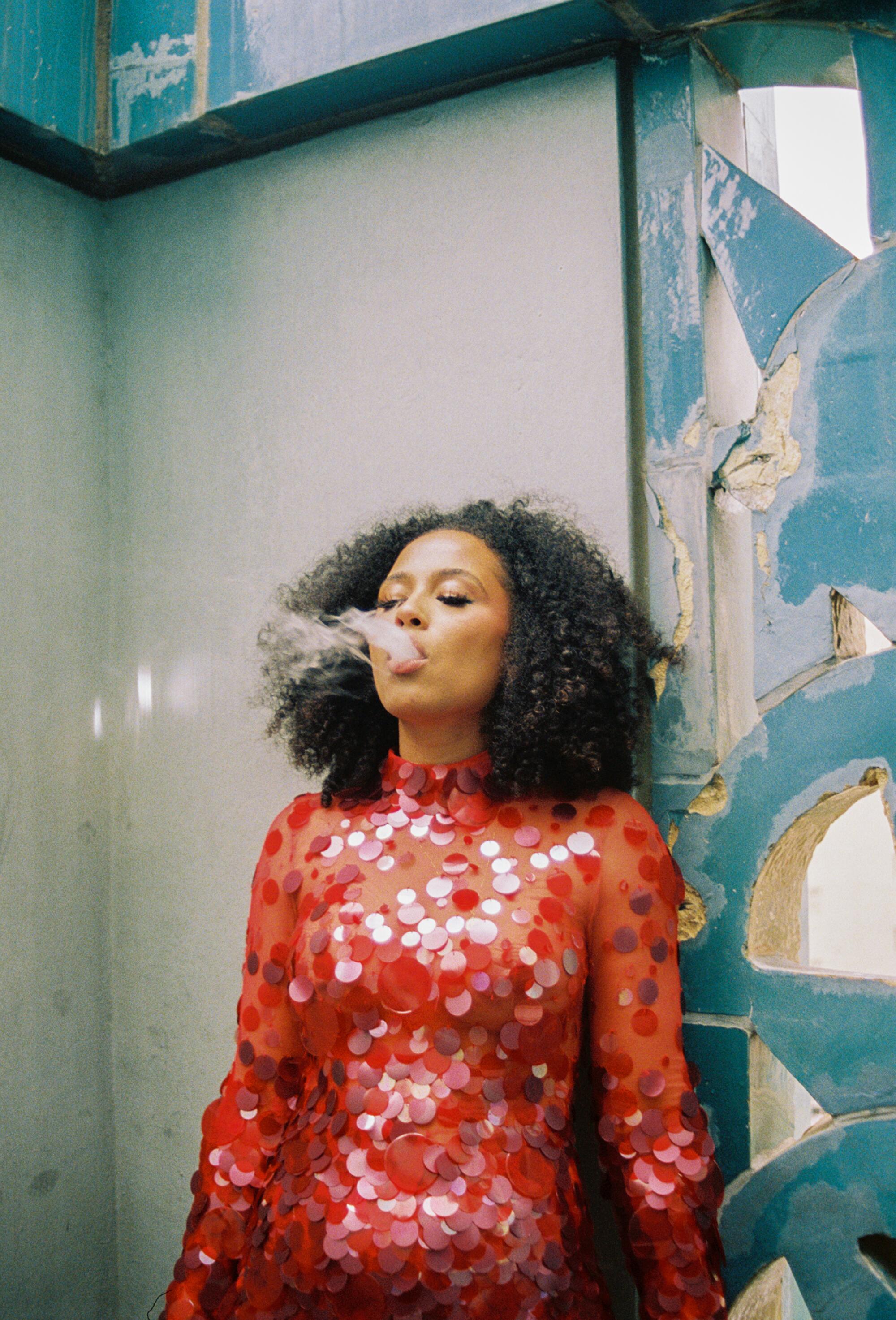
The taxonomy of L.A. rooftops includes the sanctioned hotel rooftops, which usually feautre a bar or restaurant, like Upstairs at Ace Hotel, Broken Shaker at the Freehand, Spire 73 at the InterContinental and the Rooftop at the Wayfarer. There are the rooftop bars, restaurants and kick-it spots that stand alone: Perch, obviously; LA Cha Cha Chá (technically); Rooftop Cinema Club. My personal favorite, the one that feels most true, is the residential rooftop, which you can only access via the homies and homies of homies. The Eastern Columbia Building has a beautiful one, its Art Deco façade glowing a faded turquoise terracotta that matches the pool. It’s the kind of place where you can spend hours with your friends — there is no bill to pay, there is no time limit. There are also the rooftops that you’re not supposed be on at all: the slew of “secret rooftops” that many a TikTok video has been dedicated to finding and sneaking into.
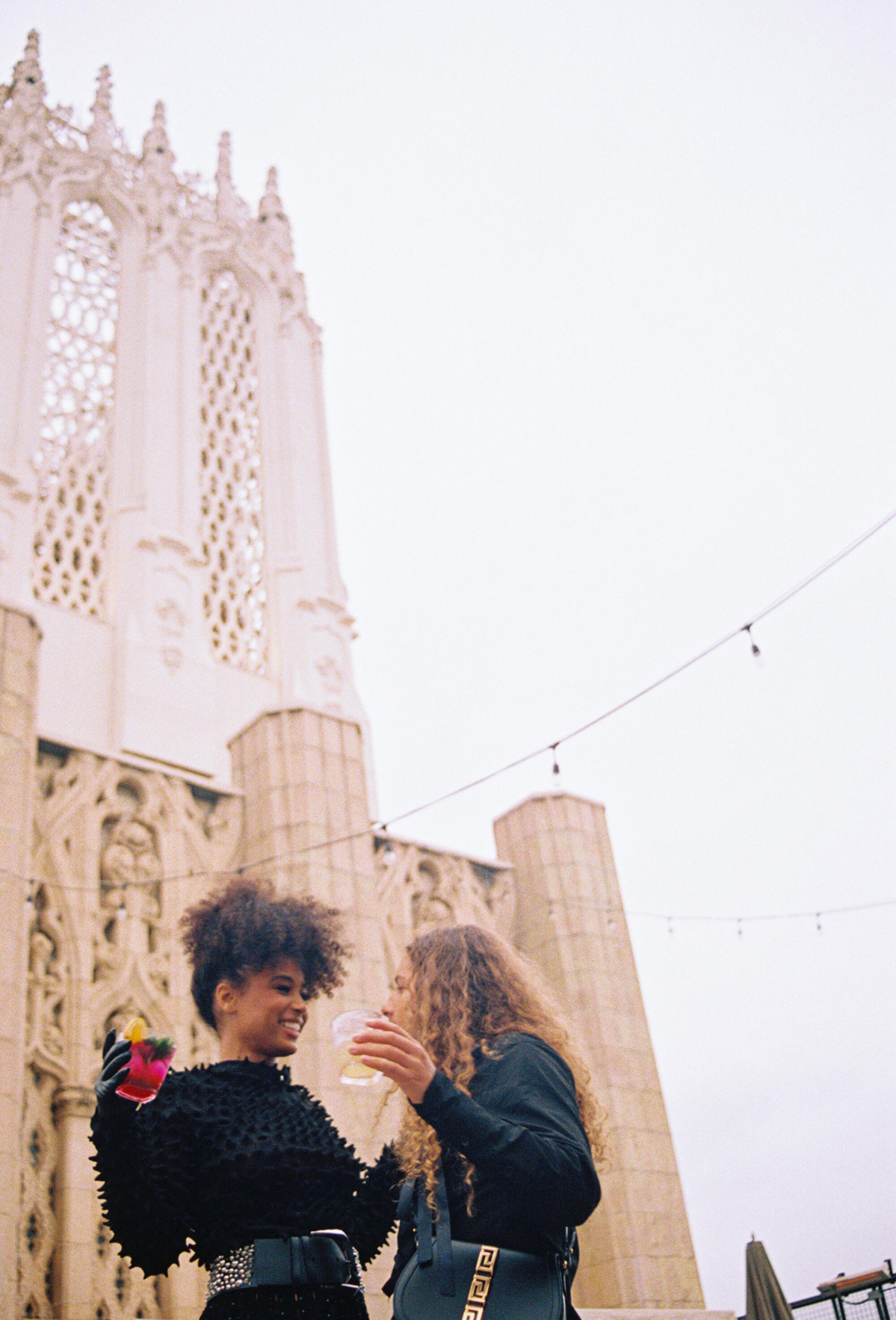
Type “L.A. rooftop” into the TikTok search bar and you might come across the work of Jesse Rodriguez, an L.A. native who started photographing L.A. views, often from up high, during the pandemic. The memory of his first rooftop is still crystal clear: A friend who lives off of 1st Street invited him up one evening; they spent almost three hours listening to music and playing cards. More friends joined the rotation as the evening went on, of course peaking with sunset. It’s still one of Rodriguez’s favorite spots to go to this day, though he’s hit many since.
When you’ve been to enough rooftops, you start to develop a personal scorecard of your favorite features (has a place to sit; doesn’t have a 360 view: B-). The hallmark of a good rooftop in Rodriguez’s opinion is that it must be a little bit outside of downtown so that you actually get the skyline. “People think, ‘Just find the tallest building right in the middle of the city,’” he says. “But you’re kind of inside of what the view is. You want to be a little bit outside just to see.”
Another important part of the experience of being on a rooftop in L.A. is documenting that you’re on a rooftop in L.A. After all these years, I still feel my hand instinctively reaching for my phone to take a picture of the Korean church on Adams, with its unique “X” sculpture on the front lawn. Rodriguez has garnered a following documenting them. Some of his greatest hits are videos with text overlay that reads “Secret DTLA Views” (50,600 likes); “POV: You get into one of the rarest roofs in LA ✨” (41,000 likes). But that little jump in the breath, the tightening of the muscles that happens when walking onto a rooftop for the first time and seeing the view, is something he’s trying to preserve for himself. “I don’t do it all the time,” he says. “And I think that’s intentional on my part because I want to keep it special. I don’t want to burn it out, even in my mind.”
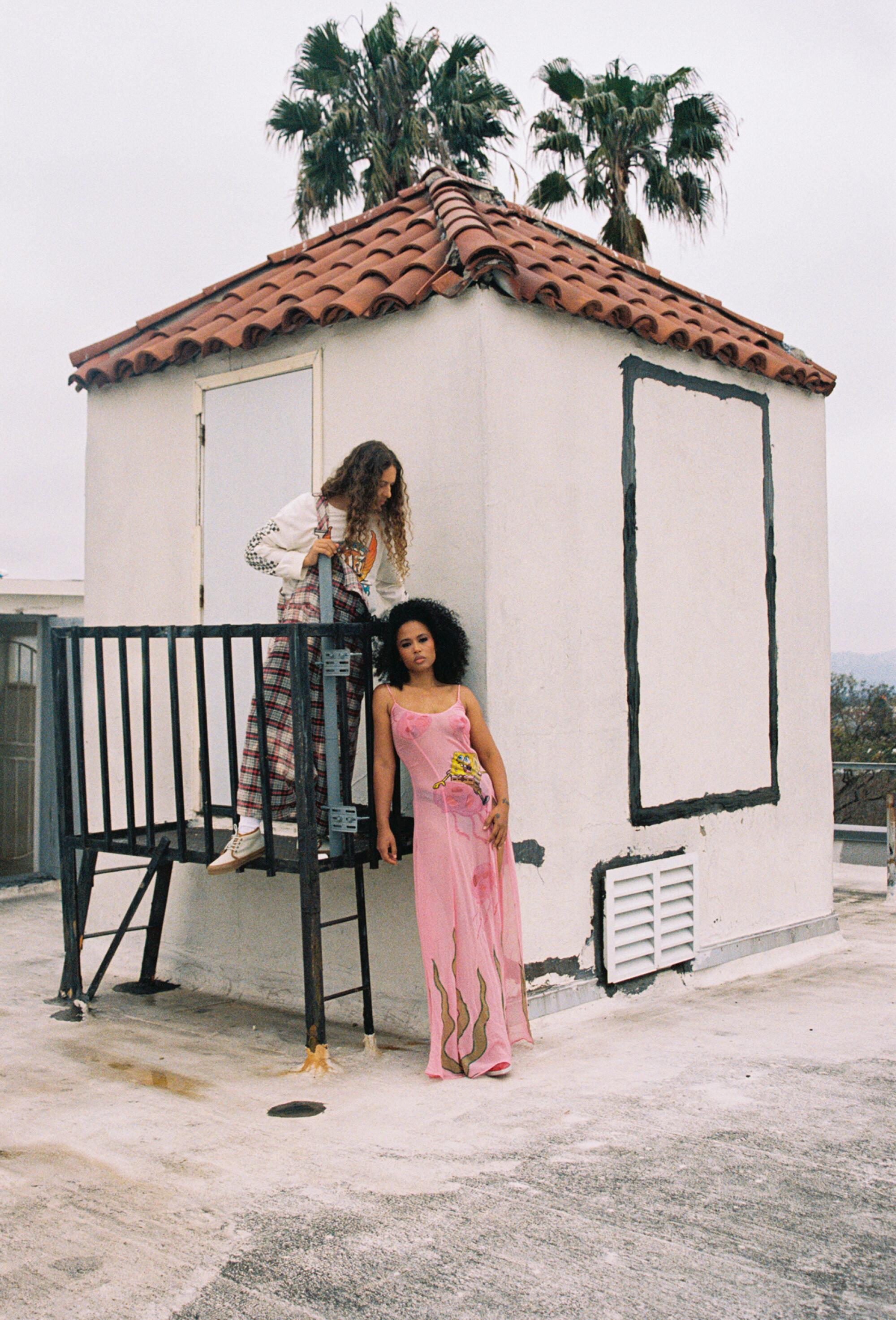

My stream of consciousness on a rooftop usually goes something like this: Life’s crazy, dawg. My problems could be the size of that tiny speck in the distance, if I stare at it long enough. It’s not that deep (even if it is). I am nothing/I am everything. L.A. is supporting 4 million people through 4 million different eras. Is the Fashion Nova ad over the Vertigo a modern landmark? This is my life, but it’s a lot of other people’s lives too — here we are, together.
Spending time on a rooftop is powerful because if your sightline shifts, your thought pattern might shift too. A common piece of therapeutic advice is that if you’re too deep in your head, if you’re on the verge of an anxiety attack, if you can’t stop worrying, you change locations — you go in another room, you step outside … you climb on top of a building and take it in. A new way of thinking, which essentially is a new way of living, is revealed through this practice.
In L.A., a rooftop is not regular, it’s a revelation.
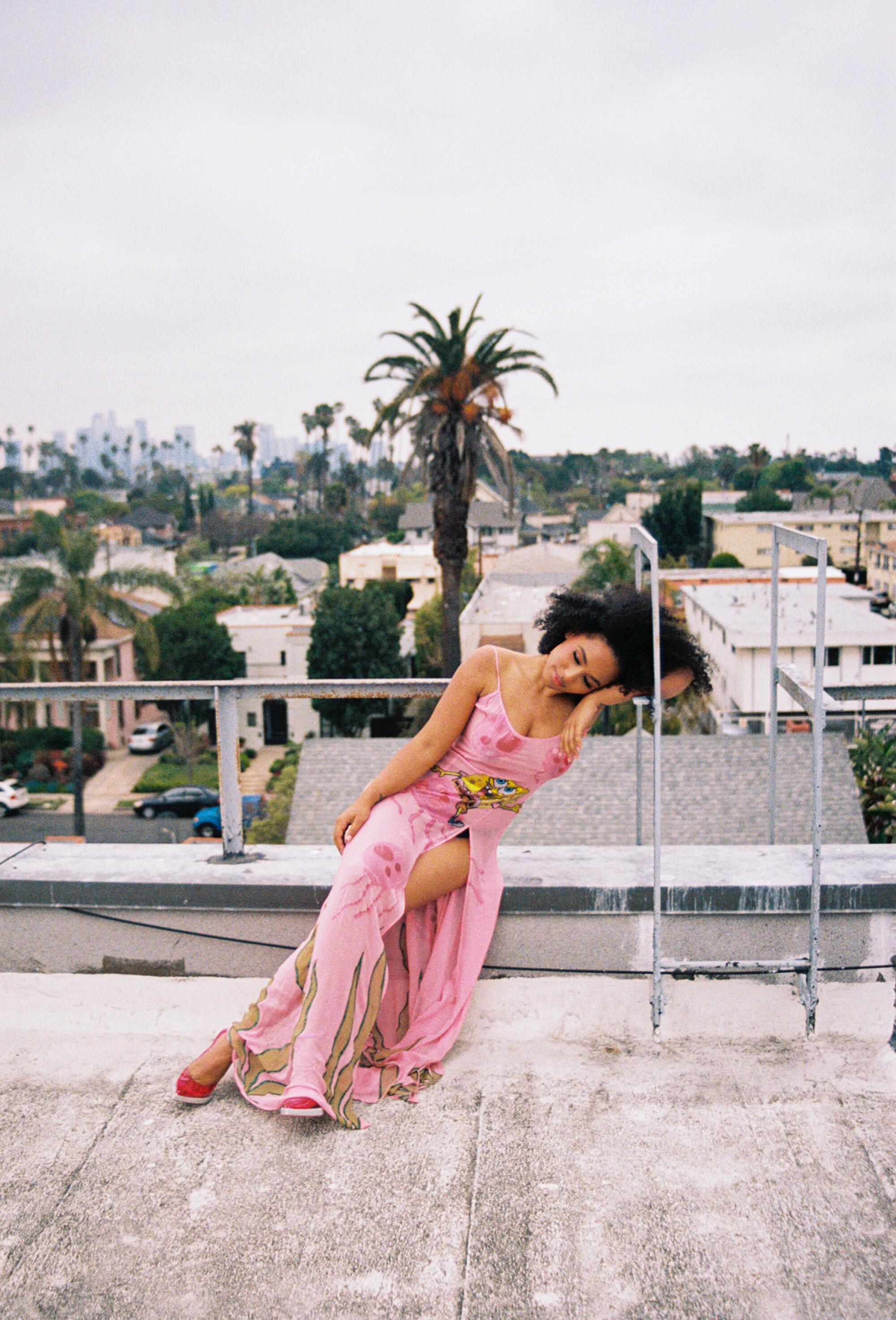
Styling assistant: Katherine Ventura
Models: Brittany Colombo and Olan Prenett
Hair and makeup: Lizeth Janil Ayala
Locations: Eastern Building, Ace Hotel rooftop
